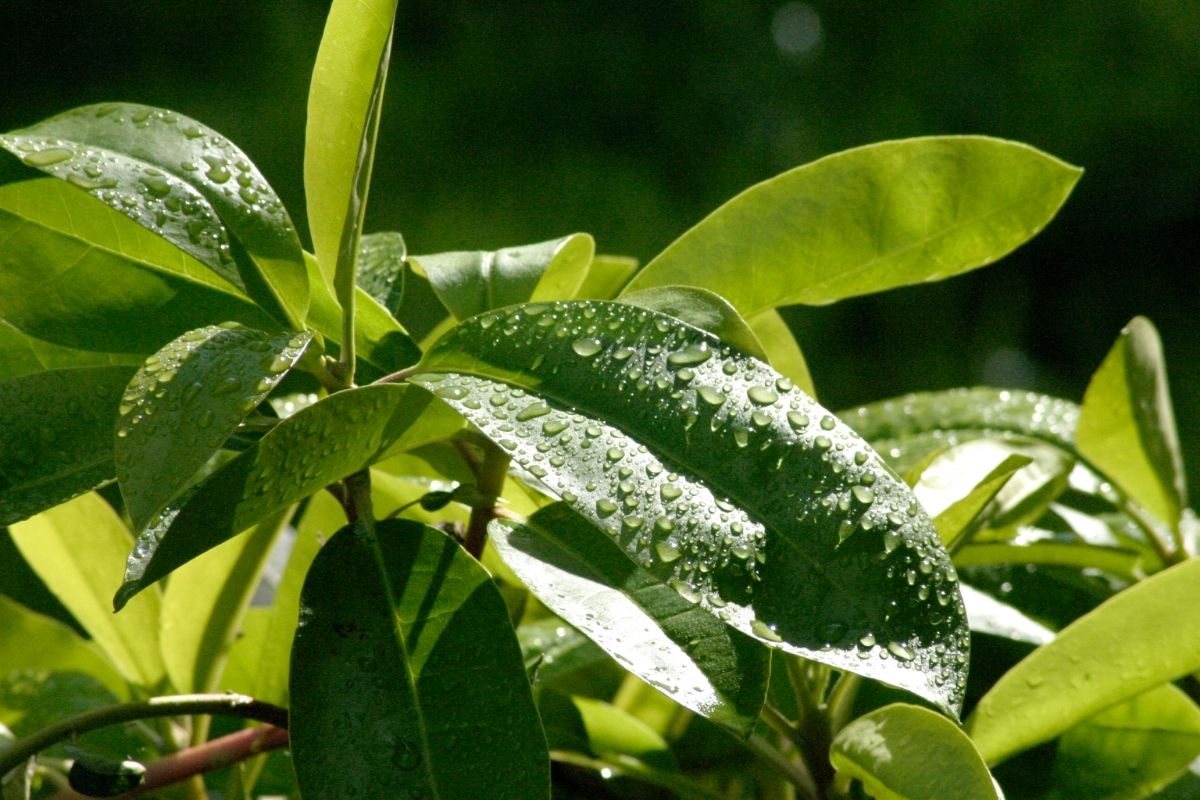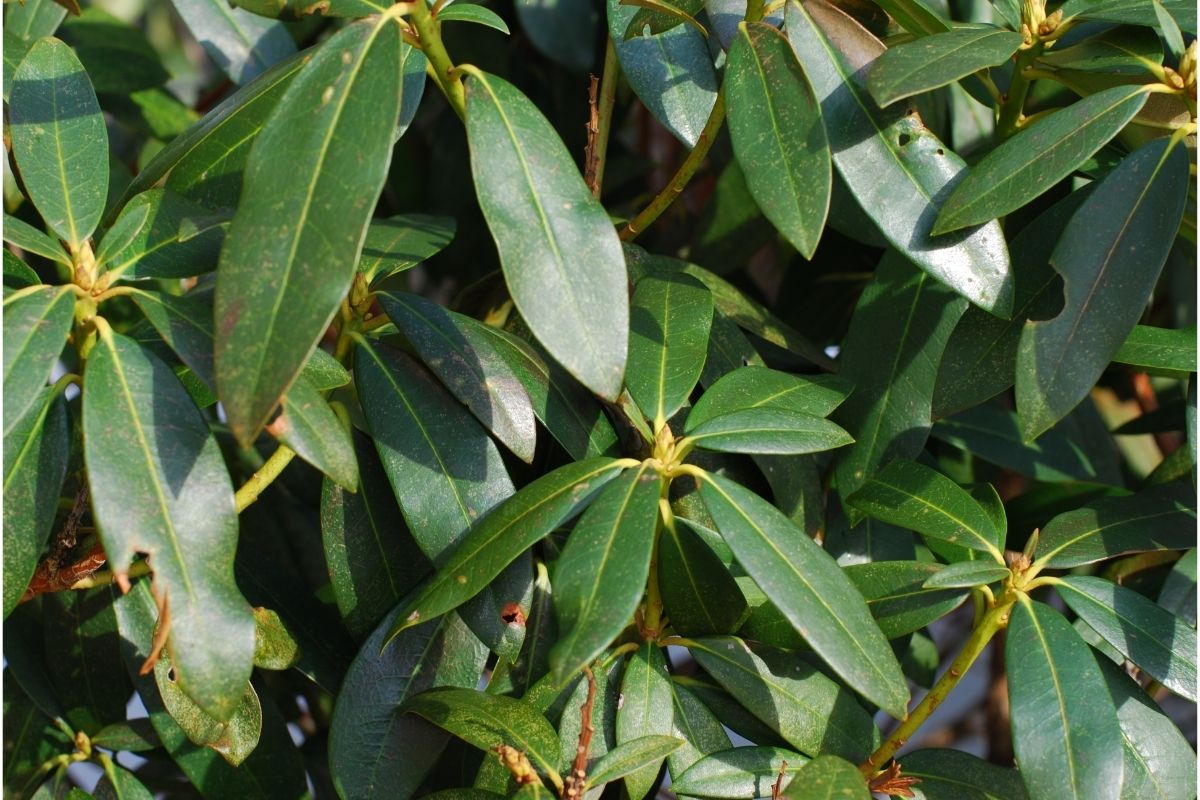Knowing why, when, and how to prune rhododendron is one of the keys to keeping them healthy for longer, but it is not always as easy as it seems.
This is why it is essential to do a bit of research beforehand, and you have come to the right place.
Rhododendrons might quickly require pruning to keep the plant under control while also looking great in the landscape. To accomplish so, you must understand when and how to prune rhododendrons.

What Is A Rhododendron?
Rhododendrons were found in the 16th century and first cultivated in 1656. They weren’t really well-known at first, and they weren’t particularly popular. It appears that only classical writers were familiar with the species.
Their colorful, bell-shaped blossoms cluster to form bushes that are almost entirely composed of flowers. The majority of the 1,000 varieties are found in Asia. They were also found in the Appalachian Mountains’ highlands.
Rhododendrons in yellow, orange, or red are associated with vitality, vigor, and vibrancy. Red, like many other flowers, is associated with love. Yellow is frequently used in funerals to honor the deceased’s life.
White flowers are associated with purity or elegance. Purple is a noble hue that represents dignity. Blue flowers symbolizes tranquility and calm. Green is associated with health and nature. The connotations of these hues are shared by many flower species and apply to rhododendrons as well.
Rhododendrons come in nearly 1,000 different types. However, only around fifteen are widely grown in the United States. These are grown by nurseries or by home gardeners. They’re an excellent choice for planting around fences or bare walls.
Different Types Of Rhododendron
Elviira rhododendrons are a low-maintenance evergreen shrub with spring blooms. They only reach a height of 2 feet and a width of 2 feet. As a result, they are ideal for borders and mass planting. Their cherry-red trumpet-shaped blossoms are delightfully perfumed.
They will remain green throughout the winter because they are evergreens. They do, however, require well-drained, extremely acidic, and organic soil to thrive.
Blue Peter rhododendrons are a wonderful choice for most garden settings. This is because they are cold hardy, heat-resistant, and sun tolerant. Some cultivars are evergreen, while others are deciduous. As a result, their tolerance is determined by your option.
The flowers that come from this type of rhododendron are bell-shaped or funnel-shaped and have a violet-blue color which is where it gets its name from. They can grow singly or in groups. Their petals are also frilled, and their shrubbery can reach a height of 3 meters.
Related: Peperomia Hope: A Complete and Concise Care, Propagation, and Watering Guide
Why Do You Have To Prune Rhododendron?
Although the Rhododendron plant does not require a lot of care to produce healthy flowers, they still are in need of more maintenance than other shrubs and bushes.
In fact, failing to keep your rhododendron’s overall shape and size in check might cause it to grow erratically and out of control.
You will need to keep on top of pruning your rhododendron each year in order for the next year’s flower buds to thrive.
Years of neglect might cause your rhododendron to overgrow. Even failing to prune rhododendrons for a single season might result in overgrowth next year.
Rhododendrons can become overgrown and leggy if they are not pruned on a regular basis. It will have seized control of its own growth by sprouting new shoots, branches, and blossoms wherever the plant’s energy tells it to.
Often, a rhododendron bush has been ignored for years and has become overgrown, necessitating severe pruning.
Major pruning is cutting the entire rhododendron down to the core branches, as low as 6 inches off the ground as possible. Some rhododendron species can withstand being pruned to 6 inches, while others cannot.
Rhododendrons that have been severely pruned will not produce blossoms the next year. This rhododendron trimming is done to repair years of neglect that has resulted in overgrowth and leggy blossoms.
When To Prune Rhododendron
Rhododendrons should be clipped for yearly maintenance in late winter, while the plant is dormant. Maintenance pruning simply refers to pruning the plant to keep it healthy while removing dead flowers and wood.

If these dead flowers and wood are left on the plant, the amount of blossoming produced the following year may be reduced.
Once the flowers have faded on shrubs, they can be deadheaded and lightly clipped in the spring. Deadheading is the most basic kind of pruning because it encourages the plant to focus its energy on new growth rather than seed production.
When the shrub has completed flowering in the spring, cut just above a group of leaves to remove the wasted blooms. This is also an excellent time to prune any dead, dying, or unhealthy branches.
If late winter pruning is not practicable, you can prune dead wood, leaves, and blossoms any time after the first frost of the season. After the first frost, the plant will go dormant, which means that no energy will be transmitted throughout the plant to the various blossoms, flowers, or wood.
Related: Snow Queen Vs. Marble Pothos: Similarities and Differences
How To Prune Rhododendron
Depending on the sort of rhododendron bush you are pruning, you will require a set of pruning shears or any of these Fiskars loppers. Azaleas, for example, can be clipped with portable pruning shears since their wood is small and thin.
Crêpe myrtles, on the other hand, are a species of blooming tree rhododendron with long, thick branches. These flowering trees necessitate the use of loppers that can extend and cut through the branch density.
Each fall, fertilize your rhododendrons to ensure that the new growth that results from trimming is rich and full. Failure to fertilize your rhododendrons can result in leggy new growth.
Leggy examples will only have flower clusters on the plant’s outer branches, rather than deep within the shrub. As a result, your shrub will appear sparse rather than full.
A leggy rhododendron is one that has not been pruned regularly. To prevent seed production, this type of pruning involves removing wilted flower clusters. This is a once-a-year task that shouldn’t take long. It is best done after the flowers have withered and before new ones form.
It is also an excellent time to remove any diseased or damaged stems during maintenance pruning. Trim the branches with sterilized pruners by cleaning with rubbing alcohol between cuts at a location below the ruined areas and above a dormant bud.
To do annual maintenance, take your pruning shears in late winter and snip off all the spent blossoms. Depending on the size of the rhododendron, you may be able to cut back 15 to 20 inches of each branch.
Because rhododendron species are not designed to be cut into shapes, each primary branch that you cut should be cut at varying heights to make the shrub look natural.
Cut between 12 and 34 of an inch above or before a dormant bud, known as a latent bud, when making your cuts. This will aid the plant’s ability to produce more flower clusters the next year.
Some rhododendrons are so overgrown that you may need to chop back all the shrub’s branches. This is referred to as rejuvenation pruning. Rejuvenation pruning is removing all dead and uneven branches so that the majority of the shrub is reduced to a compact, basic bush.
When undertaking rejuvenation pruning, the optimal area to clip rhododendron branches is about 12 to 34 of an inch above a healthy flower bud.
This will allow new healthy branches to sprout the next year because the shrub’s energy will be directed rather than determining where to generate new branches on its own.
Related: Pothos Vs. Philodendron: How To Tell Between The Two Popular Houseplants?
Summary
As beautiful as rhododendrons are, they do require a bit more maintenance than other shrubs you may have in your yard. However, if you put the time in and stay on top of the pruning, the rhododendron won’t get out of control which is when you will have to put in a lot more physical labor to get it back to how it was.
You must also pay attention to the fertilization of the rhododendron as this aids with preventing it from getting leggy and will look a lot more sparse than it should.
Even if your rhododendron has been neglected over the years, do not fear because you can still turn it around with rejuvenation pruning as this will cut the bush down until all that is left is healthy branches which is where the energy will be redirected.
Editor’s Recommendations
15 Breath-taking Types Of Calathea For Your Private Tropic Corner
Maranta Lemon Lime: An Easy to Follow Care, Propagation, and Watering Guide
Dying Money Tree: Important Steps and Tips To Revive Your Plant







